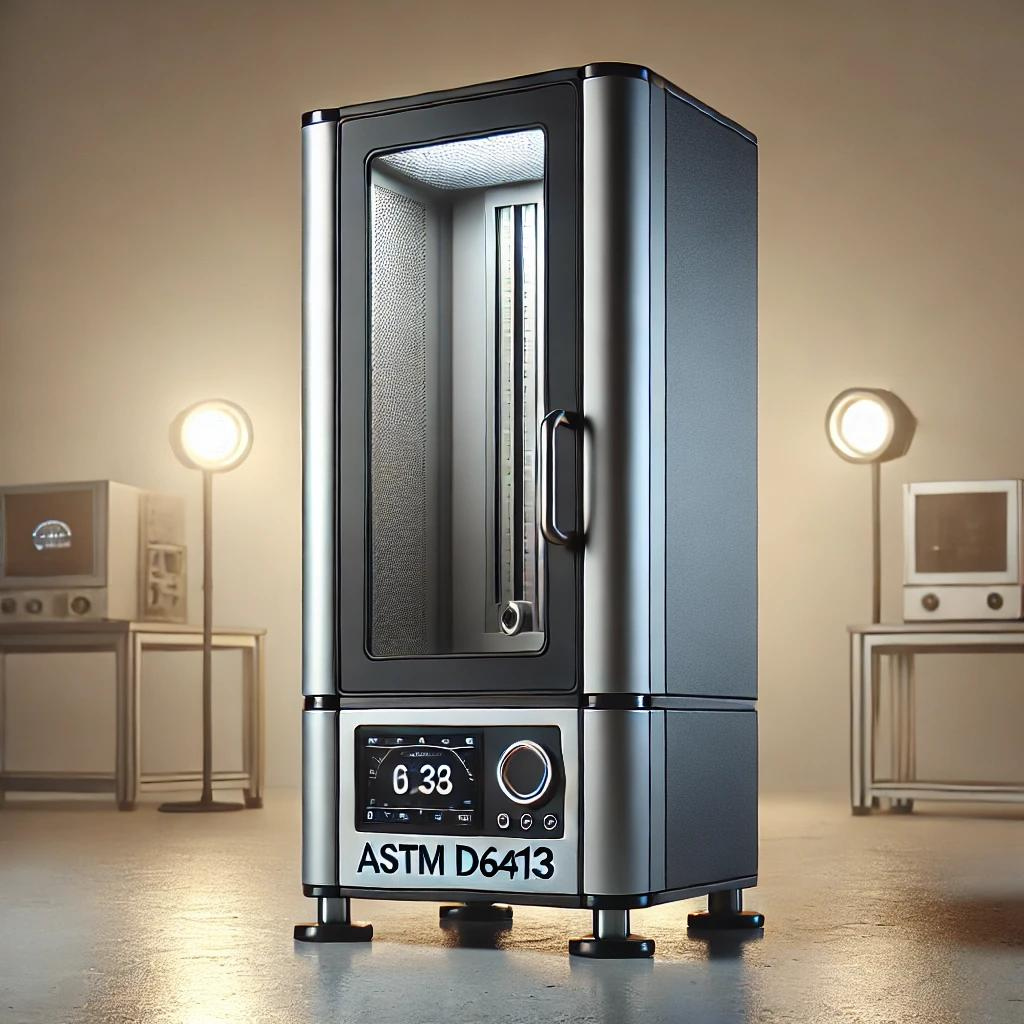Vertical Flammability Testing As per standard ASTM D 6413
Understanding Vertical Flammability Testing as per ASTM D6413: A Key to Material Safety
Introduction
- In industries where safety is paramount, the ability of materials to resist flames can mean the difference between life and death. ASTM D6413, the Standard Test Method for Flame Resistance of Textiles (Vertical Test), is one of the most important standards used to determine how a fabric or material reacts to an open flame. Whether for use in protective clothing, industrial settings, or transportation, vertical flammability testing is essential for assessing the fire resistance of materials.

What is ASTM D6413?
ASTM D6413 is a test that measures the vertical flame resistance of materials, especially textiles, to ensure they meet certain safety criteria. It assesses two main parameters:
- Afterflame Time: The duration that a material continues to burn after the flame source is removed.
- Char Length: The distance from the material’s edge to the highest point damaged by the flame.
This test method is especially useful for fabrics that are used in environments where there is a risk of fire, such as protective gear, industrial fabrics, and various forms of transportation materials.
The Testing Process: How Does ASTM D6413 Work?
The ASTM D6413 test is conducted in a controlled lab environment to provide accurate and consistent results. Here’s a step-by-step outline of how the test is performed:
- Sample Preparation: The material sample is cut to specific dimensions, typically 3 inches wide and 12 inches long.
- Exposure to Flame: The sample is suspended vertically and exposed to a flame at its lower edge for 12 seconds. This mimics the kind of exposure fabrics might experience in real-world fire scenarios.
- Measurement of Afterflame and Afterglow: Once the flame source is removed, the time it takes for the material to stop burning and glowing is recorded.
- Char Length Measurement: The length of the charred area is measured to evaluate how far the fire traveled up the material.
- Pass/Fail Criteria: The material passes the test if it meets industry standards for afterflame time and char length, ensuring that it will perform adequately in fire-prone environments.
Why Vertical Flammability Testing is Critical
Vertical flammability testing is vital for several reasons:
Safety Assurance: It ensures that materials used in critical environments—such as firefighting gear, industrial uniforms, or vehicle interiors—provide enough protection against flames.
Compliance with Regulations: Many industries are required to meet specific fire resistance standards. ASTM D6413 helps manufacturers ensure that their products comply with these safety regulations.
Product Development and Innovation: The test also plays a key role in the development of new flame-resistant materials, helping manufacturers fine-tune their products for maximum safety.
Industries that Rely on ASTM D6413
Several industries require vertical flammability testing to ensure their products are fire-resistant. These include:
Personal Protective Equipment (PPE): Fire-resistant clothing for industrial workers, firefighters, and military personnel must pass ASTM D6413 testing to ensure adequate protection.
Transportation: Materials used in the interiors of aircraft, trains, and automobiles must meet strict flame resistance standards to prevent fires from spreading in the event of an accident.
Public Spaces: Upholstery, curtains, and other textiles used in theaters, hotels, and public transportation must pass flame resistance tests to ensure public safety.
Key Benefits of ASTM D6413 Testing
- Enhanced Fire Safety: Materials that pass ASTM D6413 testing significantly reduce the risk of fire spread, which is crucial in high-risk environments.
- Reliable Data: The standard provides a consistent method for evaluating the flame resistance of textiles, allowing manufacturers to improve their products based on precise test results.
- Regulatory Compliance: Ensuring materials meet fire resistance standards helps manufacturers avoid legal penalties and ensures the safety of end-users.

Conclusion
- Vertical flammability testing according to ASTM D6413 is a critical process that ensures materials used in high-risk environments are safe and compliant with fire resistance regulations. By evaluating the afterflame time and char length, this test helps manufacturers develop safer, more reliable products, ultimately protecting lives and property.

